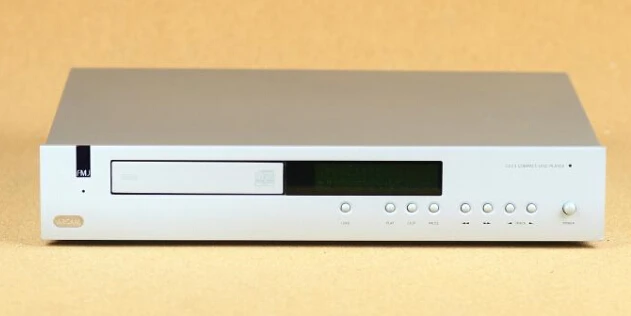Cyrus was founded in the 1990s, having previously been a sub-brand of Mission, a loudspeaker specialist. As a result, it was an exciting moment – a lot of items appeared that demonstrated the company’s ideas, some of which were short-lived. The Cyrus dAD7 is one such example, as it represents the company’s final attempt at making a top-loading Compact Disc player. All silver disc spinners after the ‘7 would load from the front, via a tray, and then a slot.
The dAD7 was essentially a one-box version of the two-box Cyrus Discmaster/Dacmaster player. This had been the company’s flagship source from its inception, and it was a beautiful rendition of the popular Philips platform. Using a Philips CDM9 swing-arm mechanism and an Analog Devices AD1861 DAC, the ‘7 effectively put everything back into one box. The choice of DAC chip was the big story here — throughout much of the 1990s, many manufacturers used variations of the Philips Bitstream chip, but the AD1861 was a multi-bit semiconductor, and even more importantly, it was an 18-bit, 8 times oversampling design.
The dAD7 was first introduced in 1997, and according to Cyrus, it took three years to develop. It used the Discmaster’s high-stability, low-jitter system clock module, as well as rigorous inter-stage power supply decoupling and star-earthing techniques to keep noise out of the machine’s many stages. There were thirteen fully regulated power supplies installed. The Philips CDM9 mechanism used a glass laser (at a time when many others were switching to plastic) and was mounted on a tuned, self-centering suspension system to prevent vibration from entering the mechanism.
The sleek black paint finish on the magnesium casework and the green backlit LC display are two great touches on the laptop. There was a socket for a Cyrus PSX-R external power supply, as well as the company’s MC-BUS system connectors, around the rear, in addition to a coaxial S/PDIF digital output and RCA line outputs. The device weighed 3.5kg, which was a lot for such a little box (78x215x360mm).
By mid-nineteenth-century standards, the dAD7 was a sophisticated sounding apparatus. It was clean, open, and detailed, with significantly less noise than its competitors — but it lacked the sudden, mid-forward balance found in many Japanese designs. It had a smoothness and propriety about it that wasn’t often the case back then. It had a lighter, brighter tone than some Bitstream designs, but it was still far more sophisticated than early Philips TDA1541-based computers. In a nutshell, it walked a fine line between understanding and excess; it was musically enthralling and engaging, but not harsh or startling. The bass was robust and tuneful, and the treble was light and airy. Overall, for a mid-price machine, the Cyrus produced a very sleek sound.
They’re shockingly affordable to get these days. A decent one will set you back roughly £200, which is a steal given the build and finish quality. Unlike other modern machines, which virtually all employ adapted CD- or DVD-ROM drives, the dAD7 is a true, purpose-built Compact Disc player that feels it. With a PSX-R, the sound is even better, with more smoothness and a noticeable boost in low-level details. It’s now somewhat of a historical curio, and if you can find one, it’s well worth picking up.







